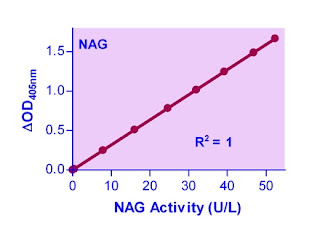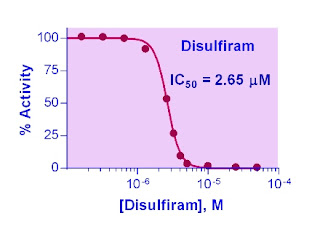About Aconitase Assay Kit
An
Aconitase assay kit is a direct and simple assay kit, which happens to be
highly sensitive as well as compatible with HTS. It can also be described as a
colorimetric assay that can be used to measure Aconitase activity that takes
place in a biological sample.
How does the assay work?
In
the Aconitase assay kit the citrate is changed to isocitrate by using
aconitase. Then, this is processed further and it creates a product that can
change a probe, which is almost colorless, into a form that is highly colored
and has a λmax at 450nm. This product is proportional to the amount of
enzymatic activity that happens in a human body. This kit uses a wide array of
samples to determine aconitase activity. Once again, a coupled enzyme reaction
is used to carry out the entire process. A single unit of aconitase is good
enough to isomerize 1.0 μmole of citrate each minute with a pH of 7.4. However,
the whole process needs to be conducted in a temperature of exactly 25 degrees
Celsius.
Details of Aconitase assay kit
One
piece of Aconitase assay kit can be used to conduct 100 tests. It basically
determines enzyme activity. It is used for samples such as cell culture
supermatants, plasma, urine, various biological fluids, serum, and tissue
extracts. It takes only 40 minutes for this assay kit to complete one function.
It is used in functional studies in the form of a dilution dependent on assays.
What is aconitase?
The
scientific name of aconitase is aconitate hydratase. It is described as an
iron-sulfur protein that contains a [Fe4S4]2+ cluster. This cluster plays a
catalytic role in stereospecifically isomerizing citrate and thus changing it
to isocitrate in the process. This is done by way of cis-aconitate in what is known
as the tricarboxylic acid cycle. This is basically a non-redox-active
procedure. There is a couple of aconitases in the tissue – cytosolic (c-) and
mitochondrial (m-). These enzymes are related but still quite different from
each other. They have also been identified in eukaryotes. They are also coded
to be used in the context of different chromosomes.
When
cells and other kinds of biological samples show loss of aconitase activity
upon being treated by using pre-oxidants it is regarded as a kind of oxidative
damage. It is said that aconitases can be inactivated owing to oxidative
stress. However, the process can be reversed.




Comments
Post a Comment